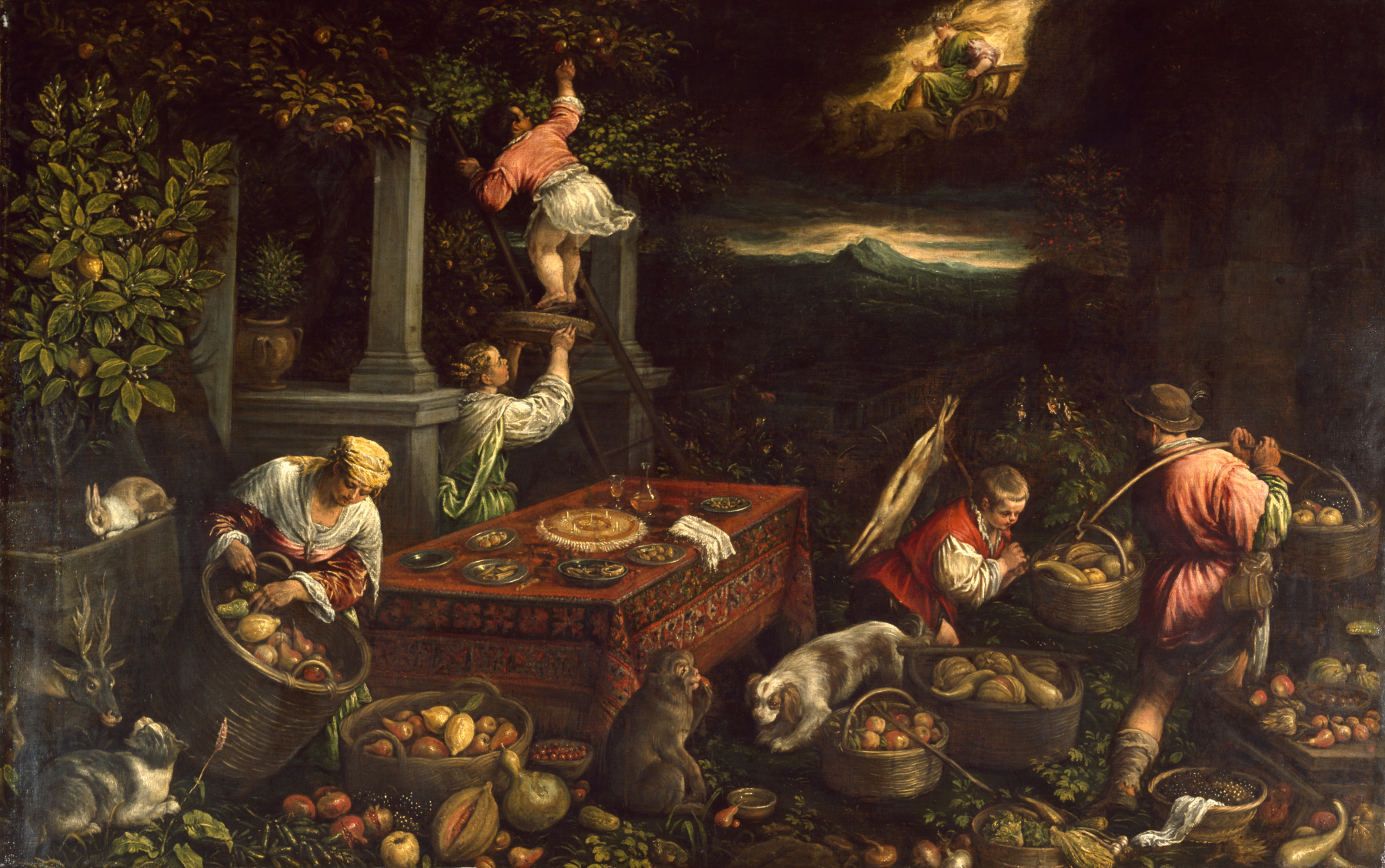Allegory of the Element Earth
(Renaissance Europe )
In the 16th century, the world was believed to consist of four elements: Earth, Air, Fire, and Water. Here, Earth (associated with the season of autumn) is symbolized by the abundance of nature's produce and by the small figure of Cybele, the ancient mother-goddess of earth and fertility, who rides across the sky in a chariot pulled by two lions.
This painting is a replica (an exact second version or copy painted in the studio) by Leandro after a work by his father Jacopo (ca. 1510-1592), who had produced a series of four paintings dedicated to the elements for a princely patron. The skillful handling of the oil paint, the bold chiaroscuro (modeling in light and shade), and the emphasis on rich colors are characteristic of Venetian painting of the period. The Bassano painters were famous for filling their canvases with a wealth of natural details that were pleasing to the eye.
Provenance
Provenance (from the French provenir, 'to come from/forth') is the chronology of the ownership, custody, or location of a historical object. Learn more about provenance at the Walters.
David M. Koetser, London and New York [date and mode of acquisition unknown]; Walters Art Museum, 1951, by purchase.
Geographies
Italy, Venice
(Place of Origin)
Italy (Kid-Friendly)
Measurements
Painted surface H: 58 1/4 x W: 92 3/16 in. (148 x 234.2 cm)
Credit Line
Museum purchase, 1951
Location in Museum
Accession Number
In libraries, galleries, museums, and archives, an accession number is a unique identifier assigned to each object in the collection.
In libraries, galleries, museums, and archives, an accession number is a unique identifier assigned to each object in the collection.
37.2363


